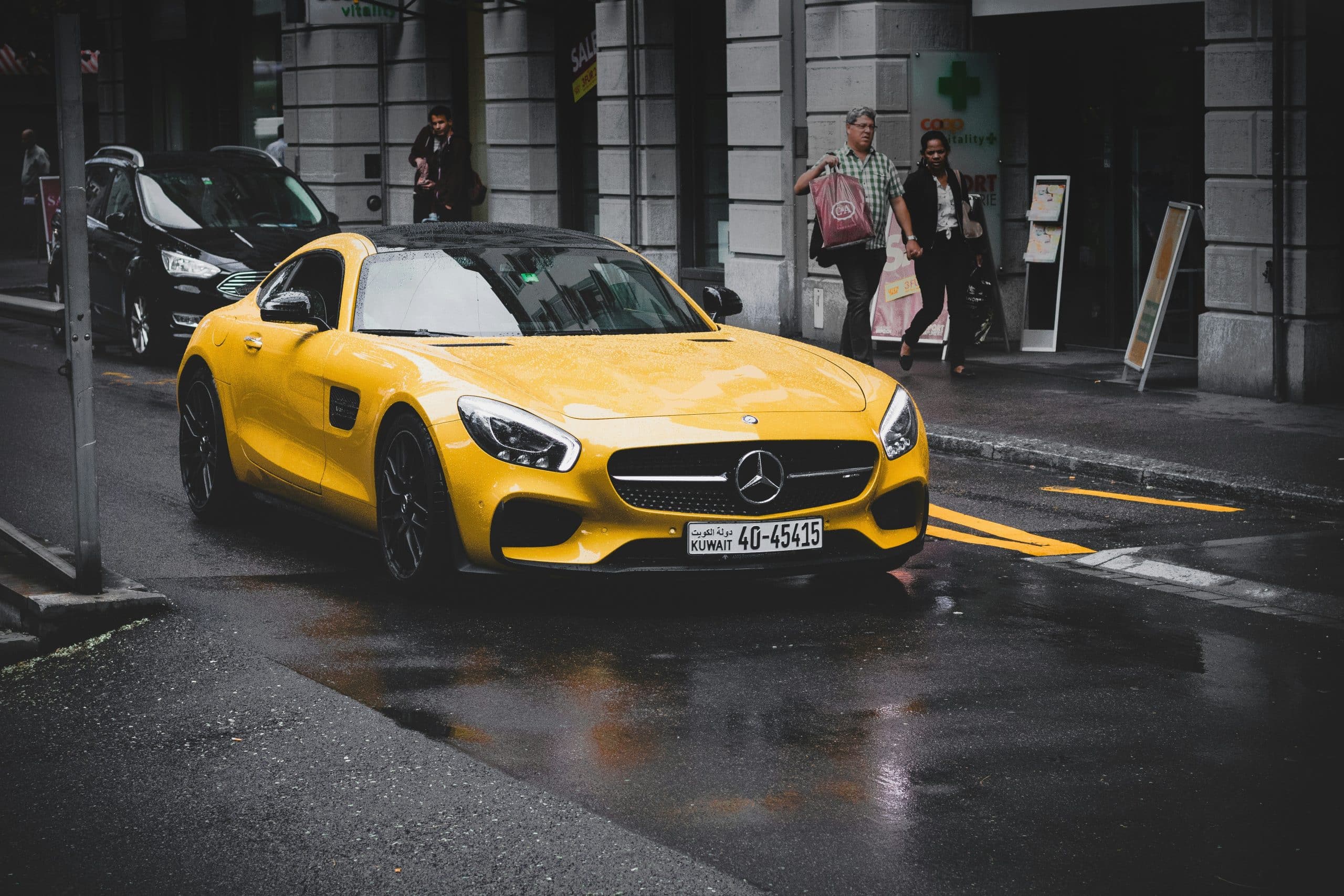Your vehicle is not just a means of transportation, but a representation of your personality. A unique and stunning car wrap can transform your vehicle into a mobile masterpiece. However, car wraps are not just about aesthetics, they also provide a protective layer to your vehicle’s paint. Let’s explore how to choose the right car wrap that will not only make your car stand out but also protect its paint.
Understanding Car Wraps
Before we delve into the art of choosing a car wrap, it’s essential to understand what a car wrap is. A car wrap is basically a large vinyl graphic or decal. It’s applied directly over the original paint of the vehicle. The application of the wrap allows the car’s appearance to be altered quickly and easily. Choosing the right wrap not only keeps the vehicle’s original paint protected but also gives it a customized, fresh look.
A voir aussi : How to Choose the Best Seat Covers for Pet Owners?
Car wraps come in a variety of textures, colors, and finishes. These can range from matte, satin, metallic, to gloss finishes. They can also be transparent or opaque. Some wraps even mimic the look of carbon fiber or brushed metal. Regardless of your preference, there is certainly a wrap out there that will suit your taste and style.
Factors to Consider When Choosing a Car Wrap: Quality and Design
When choosing your wrap, two crucial factors to consider are quality and design. Quality is paramount because it determines the durability and lifespan of the wrap. High-quality wraps are typically made of premium vinyl materials that are resistant to fading, damage, and peeling. They are also easier to install and remove without causing damage to the paint.
A lire aussi : How to Choose the Right Child Car Seat for Safety and Comfort?
The design of the wrap is equally important. A well-designed wrap can make your vehicle stand out. It’s advisable to consider your personal style and the message you want to convey when choosing a design. Some people opt for bold, bright colors and intricate designs while others prefer sleek, simple, and elegant wraps. Remember, the best design is one that aligns with your personal aesthetic and enhances the overall look of your vehicle.
Paint Protection Film (PPF) Vs. Vinyl Wraps: Which is Better?
Another important consideration when choosing a car wrap is the type of wrap. The two main types are Paint Protection Film (PPF) and Vinyl Wraps. PPF is a clear, nearly invisible layer of film applied to the car’s surface. It is mainly used for protection against scratches, chips, and environmental damage. However, it doesn’t alter the vehicle’s appearance significantly.
On the other hand, vinyl wraps offer both protection and a complete transformation of the car’s appearance. Vinyl wraps are more versatile in terms of colors and designs. They also have a shorter lifespan compared to PPF. Making a choice between the two depends on your specific needs. If you’re looking for aesthetics and protection, vinyl wraps are your best option.
The Role of Window Films in Car Wrapping
Window films are a critical component of car wrapping, often overlooked. These films tint the glass on your vehicle, enhancing its aesthetics and providing additional benefits. High-quality window films can block harmful UV rays, reduce heat and glare, as well as enhance privacy. When choosing a window film, it’s crucial to consider local regulations as some states limit how dark your window tint can be.
Ceramic Coating: An Added Layer of Protection
To further enhance the protection of your vehicle’s paint, consider adding a ceramic coating on top of the wrap. A ceramic coating is a liquid polymer that chemically bonds with the vehicle’s paint, forming a layer of protection. It helps protect against UV damage, acid rain, and bird droppings. It also has hydrophobic properties, which makes your car easier to clean. A ceramic coating enhances the gloss and depth of the wrap’s color, making your car even more striking.
Choosing the right car wrap involves balancing aesthetics and protection. With the right choice, you can transform your vehicle into a visual delight while keeping it well-protected. Whether you choose a vinyl wrap or PPF, ensure to consider the quality, design, and the added benefits of window films and ceramic coating. Your car is an investment, so treat it with the care and attention it deserves!
Why Quality of Installation Matters in Car Wrapping
The installation process of the car wrap is another critical aspect to consider. Even the highest quality vinyl wrap or PPF can look mediocre if not installed correctly. Poor installation can also negatively impact the paint protection capability of the car wrap. It’s crucial to ensure that the wrap is appropriately applied to avoid issues like bubbles, peeling, or damage to your car paint.
Quality installation begins with a thorough preparation of the vehicle surface. The car needs to be cleaned meticulously, removing all dirt, dust, and grease. Any scratches or chips in the paint should be repaired before the wrap is applied. This preparation is crucial to ensure the wrap adheres correctly to the surface, providing an even and smooth finish.
The installation should ideally be done by trained professionals. These individuals possess the necessary skills and tools to apply the wrap without causing damage to the car paint. They also understand how to handle the wrap material, preventing unnecessary stretching or tearing that could compromise its aesthetics and durability.
Ensure to choose a reputable car wrapping service with a history of delivering high-quality work. Good customer service, openness to discuss your needs and preferences, and the willingness to offer a warranty on their work are good indicators of a reliable service provider. Remember, a well-installed car wrap not only enhances the beauty of your vehicle but also protects its original paint job.
Effects of Different Climate Conditions on Car Wraps
Different climate conditions can affect the performance and lifespan of car wraps. Understanding these effects can help you make a more informed decision when choosing your wrap. Generally, high-quality vinyl wraps and PPF are designed to withstand various weather conditions. However, extreme weather can cause some issues.
For example, excessive heat can trigger the adhesive on the wrap, causing it to peel or fade. On the other hand, cold temperatures can make the vinyl wrap brittle, which might lead to cracking. Therefore, if you live in an area with extreme temperatures, you may want to consider a wrap with high temperature resistance or opt for a heated garage.
Humidity can also impact the adhesion of the car wrap to the vehicle surface, particularly during the installation process. High humidity can prevent the wrap from adhering correctly, leading to bubbles or peeling. Therefore, it’s advisable to install the wrap in a controlled environment where humidity levels can be managed.
Lastly, exposure to UV rays can cause the color of the wrap to fade over time. To prevent this, you can opt for a wrap with UV protection or consider adding a ceramic coating for an extra layer of protection.
Conclusion
Choosing the right car wrap for your vehicle can be an exciting process with the end result being a stunning, personal reflection of your style. More importantly, it offers an extra layer of protection, safeguarding your car paint against scratches, chips, and environmental damage. Whether it’s a high-quality vinyl wrap or a nearly invisible PPF, the choice largely depends on your aesthetic preferences and protection needs.
Always consider factors such as the quality and design of the wrap, the type of wrap, the role of window films, and the benefits of ceramic coating. Additionally, consider the quality of installation and the effects of different climate conditions on the wrap. Finally, always remember that your vehicle is an investment, deserving of the best care and attention. So, choose a car wrap that not only meets your style but also offers the protection your vehicle needs.
















